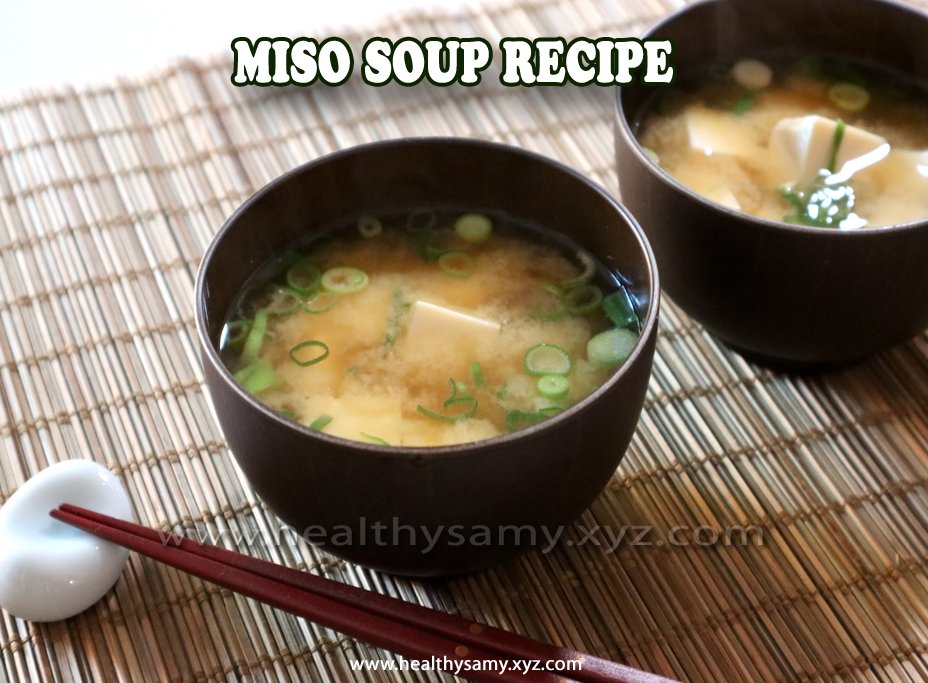Warm, comforting, and bursting with umami flavors, miso haze is a cherished chief in Japanese cookery. Whether you are seeking solace on a chilly downtime day or looking to impress your musketeers at a regale party, this simple yet protean dish noway fails to satisfy. In this composition, we’ll dive into the world of miso haze- from its origins and introductory medication ways to instigative variations that will leave your taste kids wanting more. So snare your apron and let’s embark on a culinary adventure with our ultimate companion to learning the art of miso haze!
What’s miso haze?
Miso haze is a traditional Japanese dish that has been enjoyed for centuries. At its core, it consists of a scrumptious broth made from miso paste- a fermented soybean product that adds depth and uproariousness to the haze. The paste itself is created by stirring soybeans with a swab and koji, a type of fungus.
What sets miso haze piecemeal is its versatility. It serves as oil for an array of constituents, including tofu, seaweed, mushrooms, green onions, and more. These additions not only enhance the flavor but also contribute textures and colors that make each coliseum unique.
One of the reasons why miso haze holds similar fashionability is its health benefits. Miso paste contains probiotics-live bacteria that aid digestion and promote gut health. also, it’s packed with essential minerals like magnesium and potassium.
Preparing miso haze is fairly simple. The key lies in changing the right balance between salty( from the miso) and savory( from other constituents). generally, you will start by hotting dashi stock- an abecedarian Japanese broth base made from kombu seaweed or bonito flakes- also add your asked vegetables or proteins before eventually stirring in your chosen variety of miso paste.
How to make miso haze
Miso haze is a traditional Japanese dish that isn’t only succulent but also incredibly easy to make. With just many simple constituents, you can produce a scrumptious and comforting coliseum of miso haze in no time.
To start, gather your constituents miso paste, dashi stock or water, tofu, seaweed( similar to wakame), and green onions. Miso paste is the star component then it’s made from fermented soybeans and adds a rich umami flavor to the haze.
Next, prepare your dashi stock by hotting water and kombu( dried kelp) together. Once it comes to a poach, remove the kombu and add bonito flakes if asked for a redundant depth of flavor. Alternately, you can use water rather than dashi stock for a lighter interpretation of miso haze.
Once your stock is ready, add cubed tofu and rehydrated seaweed into the pot. Let them cook gently until they’re hotted through. Be careful not to overcook the tofu as it can come tough.
Turn off the heat and whisk in miso paste until it dissolves fully into the broth. It’s important to add miso at this point rather than boiling it because high heat can kill its salutary enzymes.
Garnish with sliced green onions for added newness and serve hot! Enjoy this nutritional coliseum of manual miso haze any time of day or night!
Miso Soup Form Variations
- Vegetable Miso Soup For all the veggie suckers out there, this variation adds a redundant cure of nutrition to your miso haze. Simply add a medley of fresh vegetables like carrots, mushrooms, and spinach to enhance the flavors and textures.
- Seafood Miso Soup If you are addicted to seafood, this variation is for you! Add some shrimp, bones, or indeed fish fillets to your miso haze for a pleasurable twist. The combination of umami-rich miso paste and succulent seafood creates a symphony of flavors that will leave you pining more.
- Tofu Miso Soup Looking for a submissive option? Look no further! Adding tofu to your miso haze not only boosts the protein content but also provides a smooth and silky texture. Choose establishment or silken tofu depending on your preference.
- racy Miso Soup protest up the heat by adding some chili flakes or sriracha sauce to your miso haze. This variation adds a redundant subcaste of complexity and spiciness that will awaken your taste kids.
- Mushroom Miso Soup Mushroom suckers rejoice! By using different types of mushrooms like shiitake or enoki, you can produce a rich and earthy flavor profile in your miso haze.
Miso Soup for Cold Weather
When the temperatures drop and downtime arrives, there is nothing relatively like a comforting coliseum of miso haze to warm you up from the inside out. The savory flavors and nutritional constituents make it the perfect dish to combat the bite in the air.
To make miso haze for cold rainfall, start by opting for your favorite type of miso paste. White miso is mild and slightly sweet, while red miso has a stronger and further robust flavor. Both work well in this form, so choose grounded on your particular preference.
Next, gather your constituents. Along with the miso paste, you will need dashi stock( made from dried bonito flakes or kombu seaweed), tofu cells, sliced mushrooms, scallions, and any other vegetables you enjoy similar to carrots or spinach.
In a pot over medium heat, bring the dashi stock to a poach. Add in your chosen vegetables and cook until they’re tender but still retain their bright colors. Reduce the heat to low and add in tofu cells.
Now it’s time to incorporate the star component – miso paste. Take a small quantum of hot broth from the pot and whisk it together with your asked quantum of miso paste until smooth. This step helps help clumps from forming when adding it back into the pot.
Pour this admixture back into the pot gradationally while stirring gently until completely combined. Be careful not to let it boil after adding in the miso as high heat can dwindle its flavor profile.
poach for another many twinkle before serving pipeline hot coliseums of tastiness garnished with sliced scallions on top. The umami-rich flavors will incontinently warm you up during those chilly downtime days!
The flashback that if you have leavings or want to prepare ahead of time for unborn cold snaps( or Jones), simply store them in a watertight vessel in your refrigerator where they will keep well for several days.
Miso Soup for a Crowd
When you are hosting a gathering or throwing a party, it’s important to have crowd-pleasing dishes that are easy to make and succulent. Miso haze is the perfect choice! This traditional Japanese haze isn’t only comforting and scrumptious, but it can also be fluently gauged up to feed a large group of people.
To make miso haze for a crowd, you will need some crucial constituents miso paste, dashi stock( made from dried bonito flakes or kombu seaweed), tofu, wakame seaweed, and green onions. The great thing about this form is that you can customize it grounded on your guests’ preferences. For those who love seafood, add some shrimp or clams. However, simply forget the meat and use vegetable broth rather, If there are insectivores in the group.
launch by preparing the dashi stock by stewing bonito flakes or kombu in water. Once strained, bring the stock back to a gentle pustule and add in cubed tofu and soaked wakame seaweed strips. In another coliseum, whisk together miso paste with some hot water until smooth before adding it to the pot.
Let everything poach gently for about 5 twinkles without boiling to save the delicate flavors of miso. Garnish each serving with diced green onions for an added pop of newness.
Miso Soup fashions
Now that you have an introductory understanding of miso haze and how to make it, let’s explore some succulent variations to try at home. These fashions will take your miso haze game to the coming position and add a redundant touch of flavor and excitement to your reflections.
- Vegetable Miso Soup This form is perfect for insectivores or those looking for a lighter option. Simply hash up your favorite vegetables like mushrooms, carrots, kale, and tofu, also poach them in a pot with kombu( kelp) broth. Once the vegetables are tender, stir in the miso paste until dissolved. Garnish with green onions and enjoy!
- Seafood Miso Soup If you are a seafood nut, this form is for you! Start by sautéing shrimp or any other seafood of your choice in sesame oil painting until cooked through. In a separate pot, bring dashi broth to a pustule and add thinly sliced seaweed( wakame). Reduce heat and whisk in the miso paste until smooth. Add the cooked seafood into the pot along with some diced green onions before serving.
- racy Miso Soup For those who enjoy an added kick of heat, this racy miso haze will hit all the right notes! Begin by preparing minced tofu or funk as well as sliced shiitake mushrooms in vegetable stock over medium-high heat until cooked through. Stir in red pepper flakes or chili sauce for that fiery kick before adding miso paste to the blend. Flashback to taste- test along the way so you can acclimate spice situations according to your preference.










